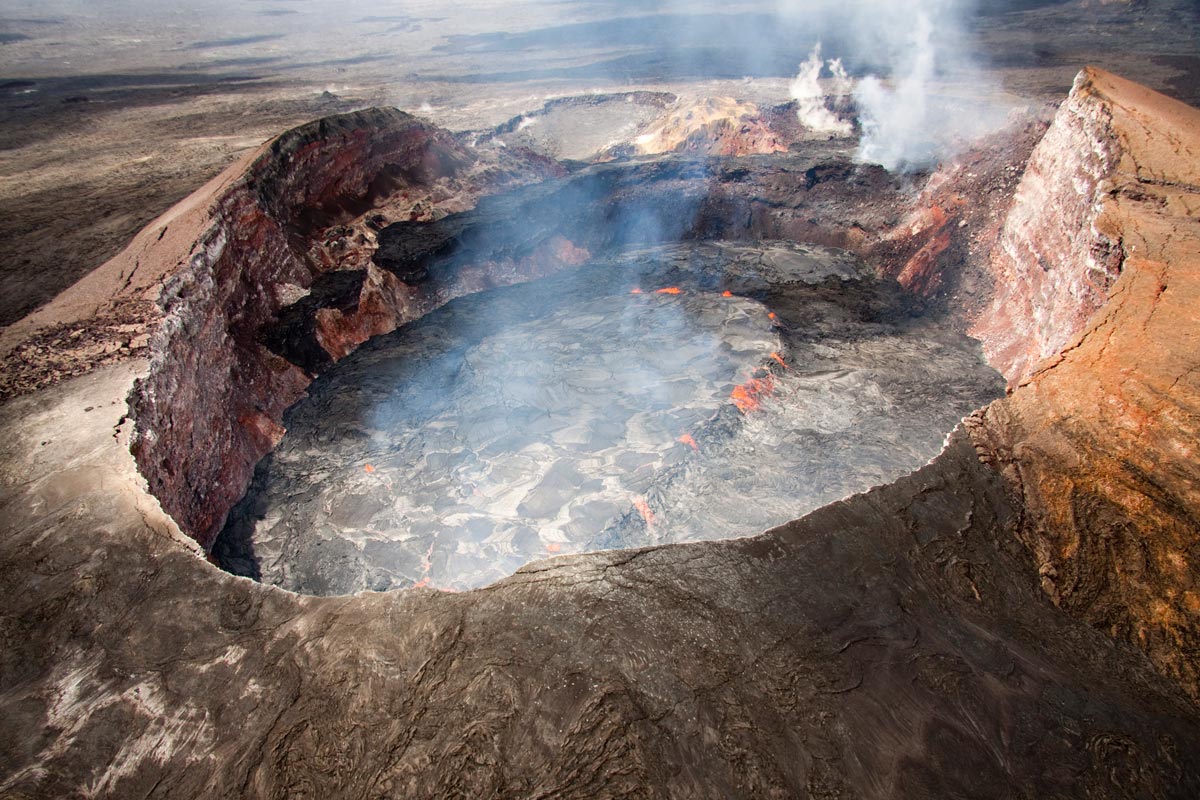 Massive craters spewing hot lava is something most of us can only envision happening in the movies.
Massive craters spewing hot lava is something most of us can only envision happening in the movies.
With magma blowing the thermometer at over 2,000 degrees Fahrenheit, devastation is surely in its path.
On the big island of Hawaii, that is exactly what they are facing as a volcano erupts, causing many to be forced to evacuate their homes.
Fox News reported:
“Lava erupting from Hawaii’s powerful Kilauea volcano has now destroyed at least 26 homes, more than double the previous figure, officials announced Sunday, citing grim findings from an aerial survey by the fire department.
Scientists reported lava spewing more than 200 feet into the air. More than 1,700 people have evacuated, and some said they may have to stay away from their homes for a long time. There was no initial word of anybody injured.”
This past weekend when the volcano initially erupted, lava destroyed 9 homes by early day.
As hours passed the destruction was worse than experts anticipated and many more homes were lost to the relentless fiery stream.
Big Island Civil Defense officials are blaming two new fissures that appeared Sunday in the Leilani Estates subdivision, which were not expected according to earlier reports.
Fox News reported on how long we should see movement continue:
“There’s more magma in the system to be erupted. As long as that supply is there, the eruption will continue,” U.S. Geological Survey volcanologist Wendy Stovall said.”
Fissures, which are volcanic vents that lava seeps out of, are popping up all around the crater site, with as many as 10 appearing since Thursday according to Fox News.
This is not the first time this volcano has been active on the island of Hawaii. The Kilauea erupted June 29, 1983, and has been having smaller eruptions ever since.
Live Science reported:
“To the casual observer, Kilauea appears to be part of the larger volcano Mauna Loa, but geological data indicates that it is a separate volcano with its own vent and conduit system. Kilauea has had more than 60 recorded eruptions in the current cycle, according to the U.S. Geological Survey, and has been erupting on a continuous basis since 1983.
On May 3, 2018, the volcano erupted dramatically, several hours after a magnitude-5.0 quake struck the Big Island. The eruption spewed lava into residential subdivisions in the Puna district of the Big Island, prompting mandatory evacuations of the Leilani Estates and Lanipuna Gardens subdivisions, the Honolulu Star-Advertiser reported.”
One single mom of 2, Amber Makuakane, knew that a dramatic eruption was possible, but decided to try and live in the area near her family regardless.
Makuakane had to evacuate after a fissure opened up across the street, and is unsure she will be able to return, according to Fox News.
Officials told residents who were forced to evacuate that they may be able to come back to get pets, medicine and other essential items that were left with the quick exodus.
Now, a week after the initial release of lava, a bigger explosion that could hurl “boulders the size of refrigerators” may be on the forecast, according to CBS News.
Geologists are warning of an explosion that will be bigger than anything they have seen in 100 years.
A suspected rock fall inside the crater caused thick smoke to billow out of the pit, giving residents an ominous feeling regarding what may happen next.
The reason the experts foresee a possible huge eruption is because as the lava levels drain lower to groundwater level, “pressurized steam can cause an explosion, shooting rocks and ash miles away from the crater”, according to CBS News.
Volcanoes National Park, a popular tourist stop, was closed Friday because of the impending danger, which hasn’t happened since 1924.
As fissures spread further than expected, more areas will need to be monitored for evacuation.
The mountain that contains Kilauea is on the eastern side of the Big Island, and residents on the other side of the island are safe at this time.
It has been tough for the locals in the area who are still dealing with the jarring effects of the earthquakes that started this chain of events, and the constant tremors that have been the aftermath.
Residents in the danger zones are encouraged to review emergency protocol and evacuation plans.
Unfortunately, all one can do is wait and see if the volcano erupts.
The Hawaiian Volcano Observatory is closely monitoring all action within and around the crater and the fissures to try and stay on top of keeping all residents safe and away from danger.
Please let us know in the comments section if you have witnessed any similar natural events, or if you think they should rebuild the area near the volcano again after danger passes.
